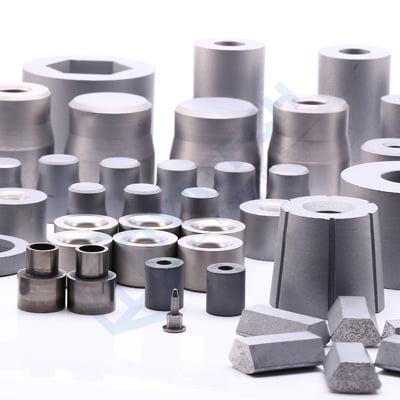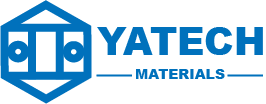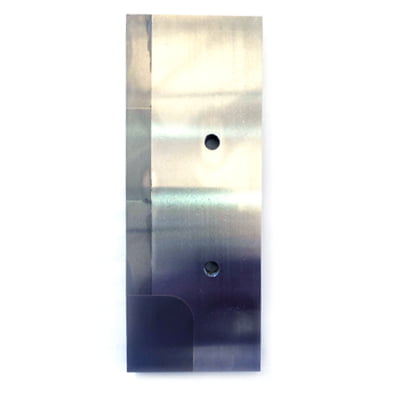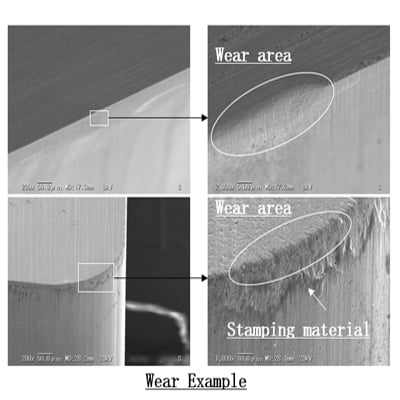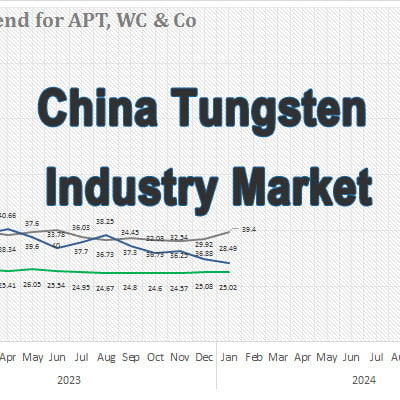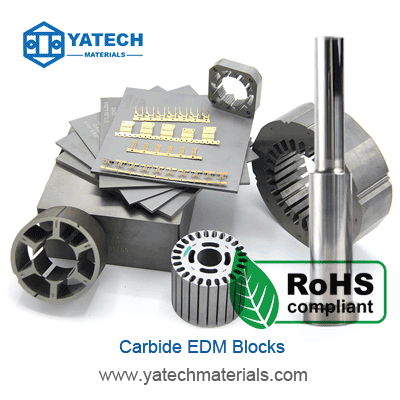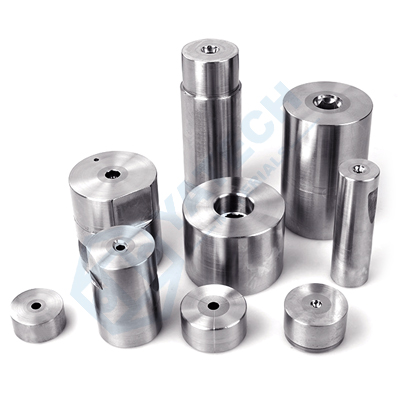
Cold heading die material requirements and selection
- Performance requirements of cold heading die materials
In the standard fastener industry, cold heading dies have to bear a large unit pressure during the cold heading deformation process. When the deformation degree is large and the material hardness is high, the unit pressure can reach more than 2,000MPa. At the same time, the metal flows violently, so the cold heading die is required to have high strength, good fatigue resistance, high hardness and good fatigue resistance, so as to ensure that the die is not damaged, deformed, and wear-resistant under high pressure.
The accuracy of the parts.
(1) High strength.
The cold heading die should work under the unit pressure of 2,000-3,000MPa without plastic deformation and cracking.
(2) Higher toughness.
Toughness is an important performance index for die steel, especially for die steel that manufactures working dies under impact load conditions. Generally used as die steel with hardness lower than 50~55HRC, and high toughness.
(3) Good fatigue resistance.
The rapid deformation and internal friction of the metal may increase the temperature of the workpiece to more than 200 ° C. The cold heading die should be able to work at this temperature for a long time without changing the hardness, and it can be continuously forged and extruded. It can still have good fatigue resistance despite the alternating stress of cold and heat.
In order to improve the life of cold heading die, different measures can be adopted. Such as improving the lubrication conditions, designing a reasonable shape of the cold heading die, reducing the roughness value, etc., to improve the processing quality of the cold heading die. The use of prestressed combined die is very effective to improve the life of the die.
The use of prestressed combined concave dies has the following advantages:
a.Improve the die strength. According to relevant information, the strength of the two-layer composite die is 1.3 times that of the overall die, and the three-layer composite die is 1.8 times the strength of the overall die (for a certain size of die).
b.Save die steel. The original overall die is all made of die steel Manufacturing, now the inner ring size is reduced, the outer ring can be made of alloy steel or medium carbon steel.
c.Due to the reduced size of the die, the heat treatment operation is easy and the heat treatment quality can be improved.
d.When the die is damaged, only the inner ring needs to be replaced, and the prestressed ring can still be used without the need to scrap the entire die.
The use of prestressed combined die also has certain disadvantages: such as increased processing surface, high processing technology requirements.
- Selection of die material
2.1 Characteristics of cemented carbide die materials
Cemented carbide is composed of medium and coarse grained rare refractory carbides (tungsten carbide or titanium carbide) and metal cobalt as a binder, and is used as a mold cemented carbide, among which rare refractory carbides are generally carbonized. Tungsten. Due to the powder metallurgy method, this alloy still maintains the original characteristics of tungsten carbide, its hardness is close to that of diamond, and at the same time, due to cobalt as a binder, it has toughness.
Carbide die has the following advantages:
(1) High wear resistance. Cemented carbide die material has high wear resistance, which can ensure that the die can work for a long time under any degree of deformation, and ensure that the size of the standard parts remains unchanged.
(2) Excellent polishability. Cemented carbide has good polishing properties, and the working surface can be polished into a mirror surface to ensure the high quality of the surface of the standard parts.
(3) Small adhesion to metal. During the cold heading process, the ferrous metal material has little adhesion to the cemented carbide die material, which ensures a high service life of the cemented carbide cold heading die.
(4) The friction coefficient is small and the energy consumption is small.
(5) High thermal conductivity. Due to the high thermal conductivity of the cemented carbide die material, the heat generated during the cold heading process can be quickly conducted away, which improves the durability of the die.
(6) Good corrosion resistance. It has excellent corrosion resistance to air, acid and alkali.
Because the cemented carbide die material has the above characteristics, and the cemented carbide composite die is used, the die life is 40 to 60 times that of the overall structure die, or even as high as 200 times. Therefore, cemented carbide is a cheap and ideal die material.
2.2 Selection of cemented carbide grades
In the process of cold heading of standard parts, the cemented carbide composite die has to bear a large impact force. In order to meet the requirements of use, it is necessary to select cemented carbide with high cobalt content, high strength and good impact toughness. Carbide alloys such as CG5, CA18, CA24.
| WC Grain Size | Grade | Co% | Density g/cm3 | Hardness HRA | T.R.S GPa | Applications |
| Medium | CG5 | 12 | 14.3 | 88.3 | 3300 | High toughness cold heading dies |
| CG6 | 14 | 14.12 | 87.3 | 3140 | ||
| Coarse | CA18 | 18 | 13.75 | 85.1 | 2940 | Screw mold with aperture below Φ20 |
| CA24 | 24 | 13.25 | 82.5 | 2650 | Screw mold Φ20 - Φ50 | |
| CT15 | 15 | 13.8 | 86 | 2700 | Stainless steel screw die with aperture below <Φ2 | |
| CT20 | 20 | 13.6 | 84.5 | 2660 | Stainless steel screw die with aperture above >Φ2 | |
| CA20 | 20 | 13.55 | 84.1 | 2740 | Warm/hot forging dies |
